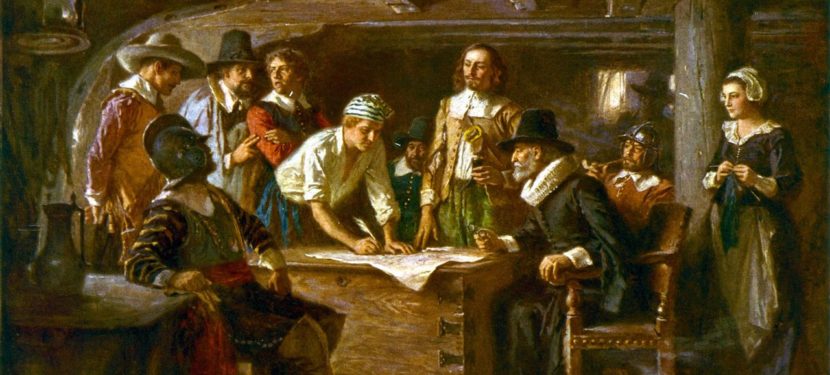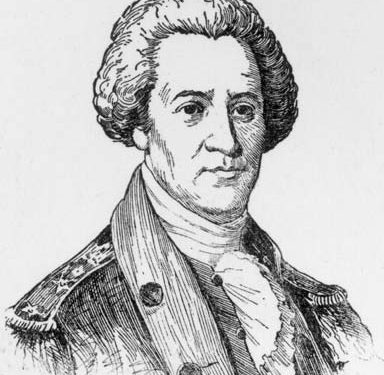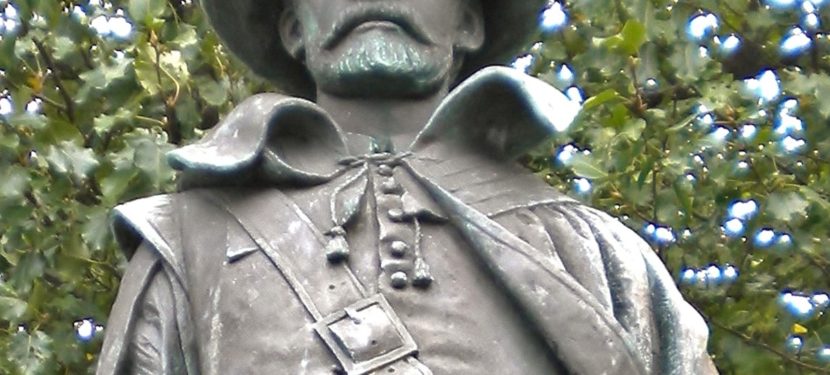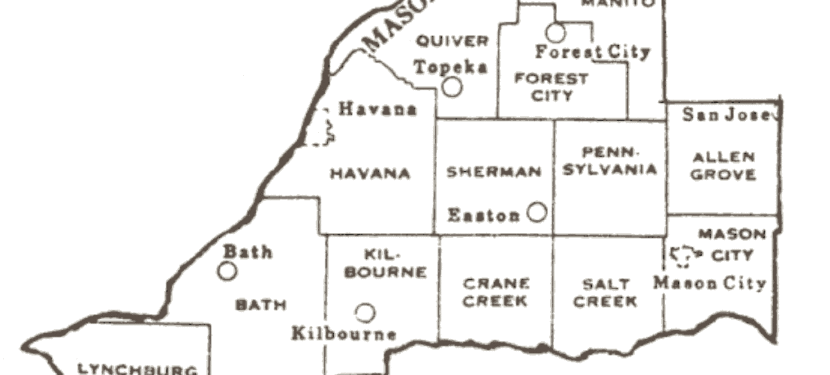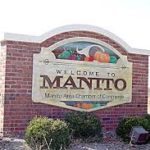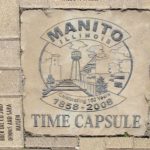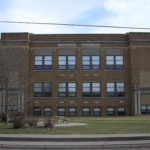next week- Bath Township
GEORGE BLACK, hotel, Manito; was born in Blair Co., Penn., Dec. 24, 1810, and remained there until 1857, engaged in farming and teaming; his first efforts in farming were in 1841, at which time he rented of Hawkins for two years, and next or R. Bell six years ; he next moved to Mr. Bell’s brother’s farm for five years, moving next to Tazewell Co., 111., remaining there two years; he next rented a farm of H. Alwood for two years, afterward renting of Alexander Trent two years, and then ofMrs. Whitehead four years, after which he bought the present hotel in Manito, 111., moving there in 1865, and has recently improved it very much ;*it is the only hotel in town, and has a very good patronage. He was married, in 1834, to Rebecca Manley,a daughter of a worthy tailor by trade : she was born in Lancaster Co., Penn. ; they had eleven children. Mr. Black is now 69 years old, and but one year of his allotted three- score and ten remains ; yet he bids fair for a few more sunny days to ripen his good old age.
JOSEPH DAILY, farmer ; P. O. Manito ; was born in 1829, in Ireland,*and remained there until 15 years old, when he went, with his mother, to England, and engaged in driving stage-coaches; in 1854, he came to New York and worked for President Fillmore for seven months ; he then mined coal in Virginia for three months ; he then came to St. Louis and remained some time, when he went to Kingston, 111., and engaged in mining ; he next started a coal mine for himself near Peoria, in 1856, and some time afterward, started another at or near Pekin, where he succeeded very well ; he hauled his coal to Mason City and exchanged it for corn, which he hauled back and sold at Pekin ; in 1859, he started another mine near Lancaster Landing, in partnership with Joseph Steward, and continued one winter ; he then lived in Pekin for six years, then moved to Manito, 111., and engaged in lumbering and buying grain ; in 1864, he bought eighty acres in Manito Township; in 1867, he settled on it and hasincreased it to 640 acres; when Mr. Daily began business at Pekin, he had just five cents. Was married, in 1860, to Mary Fox, of Ireland ; they have had two children Joseph, who died in 1865, and Joseph, born in 1866. He has property in Manito worth $1,000, and in Pekin $2,000, also 160 acres of land in Tazewell Co. ; he has held the office of Highway Commissioner and Roadmaster.
S. EAKIN,lumber-dealer, Notary Public, collecting agent, Manito ; was born Oct. 25, 1827, in Greene Co., 111., on farm, and remained there until 10 years old, when he moved, with his father, to Whitehall, where he engaged in merchandising with his father for two years ; his father then moved to Montezuma, 111., and engaged in merchandising for some time, when his father built a stone mill. Mr. Eakin worked for his father until 23, at masonry, carpentering and farming. In 1851, Mr. Eakin went to Fulton Co., and settled at Ellisville and engaged in carpentering and improving a farm. He remained until August; spring of 1852, he began teaming with A. Roper, of Montezuma, and remained until 1853 ; was engaged part of this time laying track on T., W.& W. R.R. In the fall of 1853, he returned to Fulton Co., settling at Fairview, and was occupied in farming, plastering and stone work, until the spring of 1855. when he learned daguerreotyping, with W. H. Seaving, of Canton, 111. In 1855, he returned to Montezuma and engaged in daguerreotpying there, and in Scott Co., until the fall, and then worked at plastering and brick-laying until Dec. 22. when he was taken <?ick, and was confined until February ; after his recovery, he went to Fulton Co. on business, and, on return worked at stonemasonry until 1856, when he left for Moroy, and engaged in plastering till the close of season, returning then to his home in Pike Co., where he remained until March, 1857, when he went to Spring Lake, Tazewell Co., and engaged in plastering and improving his farm until spring of 1858, when he was elected Assessor, and appointed collector of taxes for Ezekiel A. Poe ; he was also engaged in farming, but was unfortunate, by reason of crops failing, and, in 1859, he came to Manito, 111., and stopped at 0. C. Bartram’s during the winter ; next changing his home to J. K. Cox’s ; here he remained, engaged in trading, until 1860, when he worked at Pekin, laying brick with H. Ribbet, until midsummer, When he was again taken sick. In the fall of 1860, Mr. Eakin began boarding with B. F. Nash, and remained there until he enlisted in July, 1861, in Co. C, 2d I. V. C., and remained until Aug. 16, 1862, when he was wounded at the battle of Merriweather’s Ferry, Tenn. ; was taken to hospital at Union City, and remained until Oct. 30, when he was discharged by Gen. Grant ; he returned home from Cairo, on horseback, and became administrator of his father’s estate, who had died in 1861 ; also settling up his own business, and making his home with Nash until spring, at which time he found his business such as to demand a settlement, which he made by paying his creditors 100 cents on the dollar, leaving him only his clothes, books, and’ some poor notes. Shortly afterward, he purchased his present residence, and rented the’same to Dr. J. W. Neal. In April, 1863, he went to Brown Co., and engaged in canvassing for ” Abbott’s History” until June, when he was again taken sick, recovering in time to attend the celebration at Quincy, 111. ; he then went to Morgan Co., and canvassed for ” Mitchell’s Atlas ” until August ; not succeeding well, he re- turned to Manito Aug. 20, and engaged at plastering and bricklaying until 1876, when he went into the lumber business at Manito, which he still continues. Dec. 25, he was married, in schoolhouse in Manito, to Minnie Ziegenbein, born in Germany; they have three children Lillian, Ernest J. and Daisy B. His wife is in the millinery business, at Manito, and is doing well. Mr. Eakin has held offices of Police Magistrate (now in second term), Notary Public at present; has been Trustee of Schools, and President of Board of Trustees ; March 7, 1874, he was appointed School Treasurer, and still holds that office ; was Trustee of Manito, and was once candidate for County Clerk, but was defeated ; is insurance agent for the Hartford Insurance Co. ; is a charter member of Manito Lodge, No. 476, A., F. & A. M., and now holds the office of W. M. in same.
JOHN FURRER, farmer; P.O. Manito; was born June 9, 1838, on a farm in Germany, where he remained until 14 years old, when he came with his parents to Illinois, and settled in Mason Co., and has been here ever since. He first engaged in farming for Mr. Akers, near Topeka ; after hurd working three years, for $10 a month, he worked for himself, on what is the Kidman farm, for three years. In 1864, he was married to Lidda Singley, of Pennsylvania ; after marriage they settled on Mr. Starrett’s farm, and remained two years, after which he moved to Mr. Schrink’s farm, and has been there ever since a period of twelve years. They have four children Sarah, William, Lindy and Melia, deceased. They are members of the Lutheran Church. Mr. Furrer takes quite an interest in educating his children, furnishing them excellent literature.
REV. W. B. GILMORE^clergyman, Manito; was born April 4, 1836, in Mechanicsville, N. J., remained there until li years old, when his parents moved to Springfield, 111., and remained a year ; they then moved to Fairview, Fulton Co., where his father now lives ; his mother’s maiden name was Vanordstrand. He attended school while he was with his parents, and at length studied Latin and Greek, under Rev.Mr. Jerolmon ; during 1859 and 1860, he taught school at Fairview. . In September, 1861, he went to Holland, Mich., and attended the Hope College, at that place, where he graduated in 1866 ; he then commenced his course in the Faith Seminary, at Fair- view, in which he graduated in 1869. He then went to Amelia Court House, Va., and engaged in the Amelia Institute, remaining four years. During this time, he married Christine C. Van Ralte, daughter of Rev. A. C. Van Ralte, founder of the colony of Holland, Mich. ; they moved to Holland, Mich., where he engaged as Principal of the Female Academy for a year. Owing to ill health, he abandoned teaching, and came to Spring Lake, Tazewell Co., and took charge of the Reform Church there. In 1876, he began his labors at Manito, where he now resides ; has held almost all offices connected with the Church. All through life, he has depended upon his own resources ; he gave instruction in music while in the Institute at Michigan. He has had four children A. V. R., Willie B. S., d.ed June 25, 1871 ; Margaret A., died Feb. 21, 1879 ; Frank E., died Feb. 13, 1879.
GEORGE HECKMANN, blacksmith and carriage-maker, Manito ; was born Aug. 24, 1831, in Baden, Germany, and remained there until August, 1853, when he came to New York and engaged in his trade, blacksmithing and wagon-making, for two years, after which he came to Pekin, 111., and worked for T. & H. Smith at smithing for eleven years. In 1866, he was in business for himself in Pekin for a year. In September, he moved to Manito, 111., settling in partnership with N. Weber until Dec. 13, 1871, when the firm of Heckmann & Weber moved to Pekin and remained there in business until 1874, when Mr. Heckmann sold to Fry & Weber, and returned to Manito, July 24, and engaged in the present business. Mr. Heckmann has accumulated a little fortune; has a shop, house and three lots in Manito and 106 acres of land in Tazewell Co., under fine improvement, earned entirely by his careful management. He has been a member of the M. E. Church twenty-three years ; his wife and two children are also members. He was married, Jan. 24, 1856, to Mary F. Weber, of Pekin; they have had ten children Lizzie (dead), George, Freddie (dead), Philip, Arthur, Anna, Lewis, Liddie, Ida, and Frankie. George is working at wagon-making in Kansas City. Mr. Heckmann has held the office of Town Trustee. THOMAS HILL, farmer; P.O. Manito; was born in England in 1825, on a farm, and remained there until 1851, engaged in farming with his father. He came to New York ; remained but a short time ; then came to Illinois, settling at Knoxville for six months, making brick ; he then worked on a farm in Knox Co. for Bainbridge, for one winter, when he hired out to Squire Marks for a year, and afterward went to Peoria and engaged in working in a tavern for Prince, where he remained some four years ; he then worked at farming at Princeville for five years for himself; from there he came to Mason Co. and engaged in farming for himself, renting of B. Prettyman ; he then went to what is called Egypt and engaged on E. Alwood’s farm for two years. Nov.22, 1862, he was married to Nancy C. Charltou, of Clark Co., 111.; some time after marriage, they bought land and settled on it and rented ; he sold out in a year and rented a farm of George Alfs for three years ; from there they came to the present farm of 240 acres, 160 ot which they inherited and the rest they have obtained by their own labor ; the land is worth probably $50 per acre. His wife had the following children before marrying Mr. Hill James B., A. Lincoln, William H.; after this marriage John T., George W., Annie, Mary (died Oct. 14, 1864, Sargent M., Cornelius E., Columbus, Sarah A. (dead), Charlie.
MATTHEW LANGSTON, farmer; P. 0. Manito; was born June 4, 1824, in Rutherford Co., Tenn., on a farm, and remained there some time ; when quite young,
he went to Missouri, and his lather there engaged in farming and as a wheelwright for some two years; they came, in the fall of 1828, to Illinois, and settled in Morgan Co. ^now Scott), on a farm ; Mr. Langston remained at home until 1843, at which time ho
went into partnership wiih his’ brother and bought a saw-mill of their father, owning
and running it until the spring of 1850, when he sold out and moved to Mason Co. and improved a farm, which he sold in 1873 ; he was engaged in mercantile business
at Manito from 1865 until 1873, in which year he went to Kansas and farmed a year, returning and settling in Manito, 111., on some property which they now own ; he is now
managing and farming a piece of land owned by Peter W. Gay, of Manito Township ; he was engaged one year in the war with Mexico, and, in the late war, was Captain of
a company in the 85th I. V. I.; he has held various offices in the township and
district, such as Justice of the Peace in Manito, one of the first Commissioners who
laid off the township. Supervisor of Manito Township six years, School Trustee and
Treasurer, Road Commissioner, Collector one term ; elected County Judge, served two
years and then resigned, and, in the fall of 1870, was elected Representative from the
Sixty- First District of Illinois, which position he filled with honor; he is a member of
Lodge No. 476, A., F. & A. M., of Manito ; his education was very limited ; he studied
arithmetic but eleven days ; by securing all kinds of valuable literature, he has made
himself both useful and beneficial. Mr. Langston’s father was a minister and early
educated his son. Was married, in 1848, to Elizabeth Havens, of Illinois; she died
in February, 1850 ; in January, 1851, he was married to Sarah Havens, a sister of his
first wife ; they have five children William M., Elizabeth, Rebecca, Ellen, Edward.
- R. McCLUGGAGE, physician and surgeon, Manito ; was born in Holmes Co. , Ohio, June 13, 1844, on a farm; when 16 years old, he went to Southern Ohio,
and engaged in farming with his father, until 1865, when he came to Illinois,
settling in Mason Co., working on a farm by the month, going to school in winter ; in the fall of 1867, he commenced teaching school at the Walker district ; he
continued teaching in Illinois until 1871, when he went to Nebraska and engaged in teaching and laboring; he taught there in the summer of 1871, and winter of 1S72
and spring of 1873, after which he returned to Mason Co., 111., and read medicine at Mason City, with Dr. I. N. Ellsbury, until the fall of 1875, when he began attending
Rush Medical College at Chicago, graduating in 1877, when he returned home and
began practicing medicine at Manito and has met with good success ; during the winter of 1878, his office burned up in connection with Dr. Walker’s, and consumed every
medical book in town ; he is at present Highway Commissioner. He was married, in April, 1877, to Clara Todd, of Topeka, 111.; they have one child Thomas
- BENJAMIN RUTHENBURG, merchant, Manito; was born in 1819 in Prussia : remained there until 21, when he went into the army for two years; in 1843, he came
to Baltimore and from there to Philadelphia, thence to Nashville, Tenn., where he
began merchandising, afterward moving to New Orleans and engaging in selling goods ; he then moved to St. Louis, in 1845, and, in partnership with his brother, dealt in dry
goods for six years, when he sold out and next engaged as clerk in merchandising for a firm in Agency City, Iowa, which he afterward bought and continued in until 1859, in which year he married Mrs. Dolinda Sparks, (Witherforth); she had two sons Edgar
and Hubbard Sparks ; Edgar owns a farm of 200 acres which he and his brother manage. In 1861, Mr. Ruthenburg engaged in merchandising in Spring Lake Town until 1863, when he came to Manito and engaged in merchandising; in 1877, he transferred
his business to his step-son. He was a Justice of the Peace at Spring Lake and also member of the first Town Board of Manito ; he owns property worth $2,000, earned
entirely by his own labor and management.
- W. ROGERS, farmer; P. 0. Manito; was born Oct. 14, 1825, in Clark Co.,
Ky., on a farm and remained there until 6 years old, when he went with John C. Rogers
to Old Virginia ; Mr. John C. Rogers was a Baptist minister, who married W. Bonitield, of Virginia; they moved to Illinois in 1831, and settled in Morgan Co., on a farm, where Mr. Rogers lived until 1850. In 1848, he was married to Rebecca Langston, of Tennessee ; they settled, some time after, .on Hugh Davis’ farm for a year,
afterward renting for a year ; he then moved to a farm owned by Livingston, in Tazewell Co.. for a year; in 1851, lie settled the present farm of 160 acres, then a raw
prairie, but now. by improvement, is one of the finest forms in the country ; Mr. Rogers made his happy home by his own labor and management; he takes an interest in all
modern improvements, having on his farm utensils worth laboring with ; in an early day,
he took quite an interest in starting hedges ; he has taken much care in selecting and
cultivating fine fruits for home use ; has held offices of Supervisor, Road Commissioner
and Pathmaster. Has five children Lucinda S., John W.~, Mary E., Rhoda R. and
Nellie E. ; John has taught school and is now attending the institute at Mason City.
Mrs. Rogers is a member of the Lutheran Church.
- B. ROBINSON, builder and contractor, Manito ; was born Sept. 15,
1836, in Union Co., Penn., and remained there until 14 years old. His father was a tailor by trade and also followed piloting on the Susquehanna River. When
Mr. Robinson was 10 years old his father died, leaving him an entire orphan, his mother having died when he was 6 months old ; he came to Tazewell Co., 111., when
about 10 years old, in company with his brother-in-law, Mr. Boone, and settled at Pekin for some three years ; when about 17, began to work at carpentering, and has
been at it ever since ; after leaving Pekin, they went to what is called Egypt, Tazewell
Co., and settled on a farm for some five years; Mr. Robinson then came to Egypt Station (now Manito) ; in 1861, he enlisted in Co. A, 28th I. V. I., and remained in the
service until April 6, 1866 ; he went out as a drummer, in which capacity he served
two years, and was then appointed by the Colonel Regimental Postmaster and afterward
Brigade Postmaster; on his return from the war, he settled in Manito and soon married.
Aug. 3, 1866, Mrs. Martha Boone, daughter of G-eorge Black; she had one child Ella A. Boone ; by their marriage they had two children Drusilla R. and W. W. Mr.
Robinson has held the office of President of Board of Trustees three years and is such
at present ; Village Trustee six terms ; Justice of the Peace three years and still holds
the Office ; Town Clerk, Collector, and is now collector and insurance agent for the Phoe-
.nix, American Central, at St. Louis, Rockford, of Rockford, and Home, of New York ; he also belongs to Lodge No. 476, A., F. & A. M., of Manito ; he has held office of Secretary in the Lodge seven years ; is now S. W.
JOHN 0. RANDOLPH, farmer; P. 0. Manito; was born Dec. 9, 1816, in Virginia ; son of Philip Randolph, who died before J. 0. Randolph was born ; when
Mr. Randolph was 6 weeks old, his mother moved with him to Tennessee, where she
supported herself and children ; when Mr. Randolph was 12 years old, he worked out for his board ; at 13, he hired out at $3 per month, and was to go to school in winter; wrlen
he was 15, he was bound out to A. Blackburn, with whom he went from Sullivan Co.,
Ind., to La Porte Co., Ind., and engaged working on a farm for five years, when he
began business for himself on a farm near Terre Haute, where his mother was living. In 1837, he married Elizabeth Best, of Harrison Co., Ind.; they lived in Vigo, lad.,
six years. In 1843, he moved to Clark Co., 111., and engaged in farming and keeping
woodyard, running a saw-mill and building boats; he remained until 1851, when he
moved to Manito, 111., and settled on a farm, renting of Thomas Landrith ; in 1853,
they bought a farm of 100 acres in Manito Township, paying for it by their own labors ; in 1856, he went into mercantile business at Spring Lake, 111., and continued it until 1859, when he returned to farming until 1871 ; in that year, he opened a grain busi- ness in Forest City, and continued it until 1876, when he moved to Manito ; he sold
his farm in 1877 to P. W. Thomas ; he has a house and two lots in Forest City and a house and three lots in Manito. Has held office of Justice of the Peace, Clark Co..
111.; Constable, Vigo Co., Ind.; Assessor, Manito Township; School Treasurer arid Director, Clerk of Board of Trustees and has taught school. Has had seven children
Mary L., Susan E., Mary P. (dead), John E. (dead), William C. (dead), Margaret
- (dead), Nancy J. (deadj.
- A. ROSHER, Postmaster and dealer in dry goods and notions, Manito ; was
born April 27, 1827, in Germany, and remained there until 1849, when he came to New York, staying there a short time, and then went to Milwaukee, Wis., where he
engaged in the grocery business for three years ; afterward, going to Peoria, 111., and
engaged in dry goods for eight years ; he then moved to Manito, 111., and engaged in
his present business, managing it ever since. In 1869, he was made Postmaster at this place and still holds that position ; some time after he became Postmaster, he took it
upon himself to procure the establishment here of a money-order office. He was married, in 1850, to Caroline Darris, by whom he had eleven children Dora, William,
Gustus, Eda, Charlie, Otto, Mena, Ida, John, Emma (died July 4, 1853), Matilda
(died Dec. 20, 1859); his wife died in 1874. In 1875, he married a second time. Mr. Rosher is doing a first-class business and is using his means with frugality ; his home is under fine improvement.
RICHARD SAUTER, boots and shoes, Manito ; was born in Wittemburg April
3^1831, and remained there until 21, engaged in the boot and shoe business; in May.
1852, he emigrated to New York, and soon went to Reading, Penn., and was engaged
in shoemaking for four years ; he next went to Steubenville and worked for Kent six years ; from there he moved to Pekin, 111., and worked at shoemaking for John Velde
one year ; moving from there to McLean Co., he settled at Danvers and engaged in the
boot and shoe business for himself for two years. Nov. 25, 1857, he was married to Elizabeth Hotz, of Pekin. They shortly afterward moved to Havana, where he opened
in the same business, remaining until he came to Manito ; he now has a happy home
with two lots and a good boot and shoe shop. Has held office of Trustee of Manito
two terms ; is a Freemason ; he was Vice President of the German Free School of
Havana, 111. Names of his children Philip, Matilda (deceased), Emma (deceased).
Carl (deceased), Bertha, Margaret, Elizabeth, Sabina. Philip makes harness in connection with his father’s business.
REV. A. SIEVING, minister, Manito; was born Sept. 9, 1847, in District of
Melle, Hanover, Germany ; at the age of 7, he came with his parents to St. Louis, Mo.,
where his father was in the boot and shoe business for seven years ; here he attended
school ; in his 15th year, he began attending the Gymnasium College at Ft. Wayne.
Ind., and remained six years; after graduating, he went to St. Louis, Mo., and attended
the Concordia College for four years ; he graduated there and soon after engaged in the
ministry at Lincoln, Benton Co., Mo., in the Lutheran Church ; remained there about
five years ; he then came in 1876 to the Egypt Lutheran Chu r ch in Mason Co. and is still rendering services at that place ; he has another appointment at Sand Prairie,
Tazewell Co., which he founded ; he has taught school ; was Secretary of the Western
District of the Synod of Missouri, Ohio and other States. Was married May 12, 1872,
to” Mary Querl ; has three children Charlie, Theodore. Augustus, besides Annie, an orphan girl, whom they are raising. Mr. Sieving devotes his entire attention to the
ministry.
PETER SINGLEY, farmer ; P. 0. Manito ; was born in 1817, in Pennsylvania, on a farm, and remained until 1861 ; was engaged in farming until 21 ; when he was 25 years old, he began coal mining in Pennsylvania, and followed it for twenty-five
years, part of which time he was under a boss, and afterward WHS foreman, the boss
having been killed; in 1850, he came to Illinois, and bought 160 acres, which he paid
for by his own labor ; his improvement on the same has made it one of the finest farms
in the county. He was married, first, in 1844, to Catharine Boyer, by whom he had
three childreu Emma, Elizabeth A. and Henry; his wife died in 1849. In 1850, he was married again to Josephine Huntzsinger, of Pennsylvania ; they have had eleven chil- dren ; deceased Margaret, Josiah, Eliza, Christiana, Walter ; living Jeremiah, Hannah, George, Ida. Peter and Sarah J. He has been no office-seeker, but has been
connected with schools. Mr. Singley settled on his present farm in 1861, and has been
here ever since. When he was married the first time, he was $5 in debt, and had no
resources.
BENJAMIN SINGLEY, farmer; P. O. Manito ; was born in 1832, in Schuyl
kill Co., Penn., on a farm, and remained there until 1863 ; was engaged in farming and
handling timbers, when, in 1863, he came to Illinois, settled and engaged in working
for farmers by the day, $1 to $2, cutting hedge ; in 1869, he began farming on the
present farm of forty acres ; he has improved this little farm, and made it one very
desirable. He was married, in June, 1860, to S. Zimmerman ; they were blessed with
five children David R., Rebecca (deceased), Annie, Jacob and Lindy ; he has been no office-seeker, but has held the office of Postrnaster. Mr. Singley and wife belong to the
Egypt Church, Lutheran, and have been members ever since the organization of the same.
- N. SHANHOLTZER, miller, Manito; was born in Hampshire Co., Va., in 1841, and remained there, farming for his father, until 18 years old, when he moved to Licking Co., Ohio, and commenced farming; here he remained five years, when he went
West, and finally settled in Tazewell Co., 111.; he farmed for two years, afterward engaging
in milling, at Dillon, 111., for four years ; he then moved his machinery to Manito, 111., in 1870, and has been here ever since. This is the first and only mill in the township.
Mr. Shanholtzer manages his own business, and is doing splendid work for the public ; he is an active worker in the temperance movement ; has held office of Trustee of
Manito. He owns a beautiful lot and house, in addition to his mill. In 1868, he was
married to Marinda Rector, of Dillon, Tazewell Co., 111.; she died April 29, 1873. By
herjie had two children, Minnie Belle (deceased), and Miranda E. He was married, Jan. 23, 1879, to Mrs. S. C. Rector (Dean). She had one child Nellie Rector.
HENRY A. SWEET, retired farmer; P. 0. Manito; was born July 12, 1818, on a farm near Mendon, Worcester Co., Mass.; when about a year old, he went with his parents to Connecticut, and livedvin that State until 21 ; when old enough, he began
clerking in a dry-goods store for Joseph W. Turpin, at Warehouse Point, Conn., after which he went to New York, and worked at carpentering for three years. In 1842,
he came to Ohio, and engaged in wagon-making and merchandising until 1849. In 1852, he sold out and came to Green Valley, 111., and farmed until 1860, then engaging
in grain business in Pekin, 111., for two years ; he then moved back to his farm in Tazewell Co., and stayed there until the spring of 1867, when he came to Manito, and
engaged in grain and lumber for one year. In 1868, he went into mercantile business,
and was burned out; was also express agent for three years. In 1870, he moved again
to his farm in Tazewell Co., and remained until 1875, when he returned to Manito, and
became station agent for one year. In .1876, he entirely lost his eyesight, which has
but slightly returned. Was married, in 1840, to Mary Weber, of Massachusetts, and
has eight children Henry, Mary, George W., Annette, Rowena, Fannie, Carrie, Eva,
and Leroy. He has held office in Ohio ; was Town Clerk and Trustee three years
in Tazewell Co., 111.; was Supervisor, Assessor, Collector, Commissioner of Highways,
Poormaster and Justice of the Peace fourteen years. In 1864, he took the census of
Tazewell Co.; was President of the Board of Trustees of Manito one year; he taught
school eleven months ; he has 90 acres, well improved, also a house and four lots in Manito.
- SCHOENEMAN, saddler and harness-maker, Manito ; was born in Germany in 1833 ; he remained there, engaged in harness-making, until 24, when he came to Peoria,
111., and engaged in business until 1861, when he enlisted in ‘Co. A, 2d Artillery, for three year,;, returning in 1864 to Peoria, and remaining a short time, and then moved
to New Orleans, where he was in the harness business for a year and a half. He was
married, while there, to Rosena Ruth, of New Orleans; in the latter part of 1865, they moved to Peoria, and shortly afterward to Manito, where he engaged in the harness
business, which he still continues. He owns 160 acres in Arkansas, three houses and
lots in Manito, and the property in which he carries on his business, all of which
they have earned by their own labor and management. He has held the office of
.Town Trustee for two terms ; has been no office-seeker ; has given strict attention to business by doing his own work, thus acquiring the confidence of the people.
FREDERICK SCHNELLE, farmer; P. 0. Manito; was born in 1836 in Germany; when 15 years old, he came with his parents to New York, and worked with
them on a farm ; in 1854, he moved to Havana, 111., and worked at farming for H. H.
Marbold, in Menard Co., afterward working for Fred Looks in Mason Co., and next for John and James Wilson, of Tazewell Co. In I860, he began working on his present
farm of 240 acres, attained entirely by his own labor and management ; he has made
good improvements. Was married, in 1860, to Elizabsth Bahrens, of Germany, and
by her he had nine children George, Henry, Ettie, Fred, Katie, Willie and Catherine
(deceased). Mr. Schnelle makes a specialty of threshing wheat. He is Collector, and
has held the office three years ; he has been School Director twelve years, and Commissioner three years.
JOHN THOMAS, farmer; P. 0. Forest City ; was born Sept. 19, 1815, in New
York, and remained there until his parents moved to Trumbull Co., Ohio, settling on a
farm, where he remained some ten years farming, on his grandfather’s farm ; his father
died when he was very young; in 1832, Mr. Thomas moved to Western Ohio and set- tled in Seneca Co., remaining there, farming, with his uncle; from Ohio he moved to Monroe Co., Mo., and engaged in farming for himself on some land which he had
bought. In 1836, he was married to Elizabeth Painter, of Mo. ; by her he had four
children Eliza E., Perry W., Samuel R., John W. ; Dec. 25, 1856, some time after the death of his wife, he was married to Parthena F. Cugdale, of Illinois , by her he
bad three children William, Edgar, Charles ; his second wife -died Aug. 7, 1876;
April 15, 1877, he was married to Miss Sutton. Mr. Thomas settled in Mason
Co. in 1853, on what is now the Caldwell farm ; in April, 1877, he bought the
present farm of twenty-one acres, and owns in all 140 acres ; he has held the offices of
School Trustee and Director ; he has been a member of the M. E. Church thirty-four
years ; his wife is also a member of the same church.
- A. WHITEFORD, farmer; P. 0. Manito; was born in 1842, in Medina Co.,
Ohio, on a farm, and remained there until he was 14 years old, at which time he came,
with his parents, to Illinois, and settled in Mason Co. on a farm which his father bought ; he remained there with his father until he began working in a machine shop
at Wadsworth, Medina Co., Ohio, and remained there engaged for three years. He married Julia Blanchard, of Gifford, Ohio, whose parents were from Connecticut; in 1871,
they settled on the present- farm of 160 acres, half of which they inherited, and half
they have obtained by their own management; with the improvements they have made
this farm presents a fine appearance. They have one child Flutie.
- J. S. WALKER, physician and surgeon, Manito; was born on a farm in Shelby Co., Ind., Feb. 16, 1842, and remained there until 3 years old ; his father was
a farmer ; in 1845, the family moved by team, as was customary in those days, to Mason Co., 111., and settled on a farm which they bought ; here he attended school
during the winter until 1862, when he enlisted in Co. K, 85th I. V. I., and remained
in the service nearly two years ; he was promoted to Sergeant and afterward Orderly.
On his return from the war, he read medicine with Dr. J. F. Atkinson, of Lexington, Mo.,
for two years ; he at once began attending the St. Louis (Pope’s) Medical College,
which he continued for two years, during which he graduated, and, returning home,
began practicing medicine at Forest City ; this he continued for five years ; he then came to Manito, 111., where he now practices quite extensively, and with good success ; in the winter of 1878 he met with quite a misfortune, having his office, in connection with his drug store, burned, not even saving a book from the fire ; he
contracted quite a cold in his efforts to save his dwelling, which has almost confined him ; he anticipates going South to improve his health ; the people of this community will very much regret the loss of Dr. Walker; they will remember him as one
of the influential men of their community, and, as a physician, skillful and attentive
especially so in his treatment in surgery, which has been a good part of his large
practice; he has held the offices of School Treasurer and Trustee. He was married,
in 1870, to S. A. Bradley, of Chicago ; they had two children Alberto .and Eugene,
‘who died Sept. 20, 1878.

